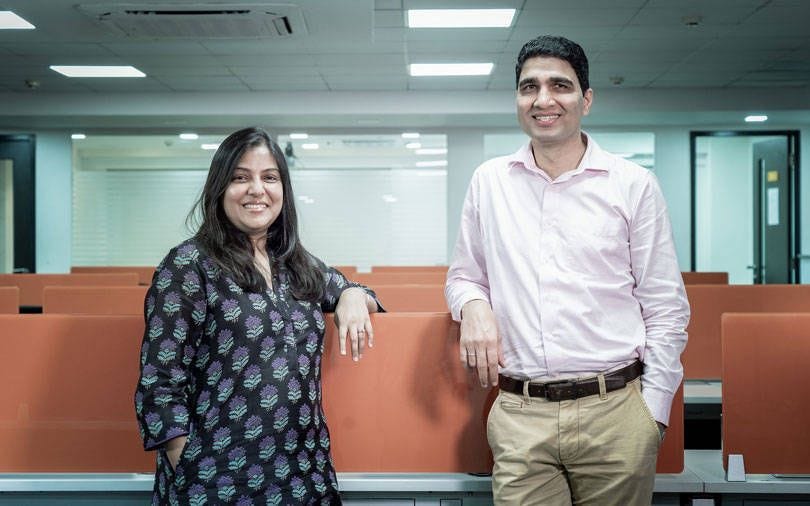When I first read about LEAD School, the first thing that hit me was their audacity. Their sheer audacity.
While other edtech startups were getting huge funding based on the idea of disrupting schools, LEAD had the audacity to do the exact opposite.
Take any big edtech startup: Byjus, Unacademy, Vedantu. All of them tell you that school is a waste of time, school won’t provide you the education needed to crack competitive exams, that’s why you should watch our tutorials and videos.
LEAD School says the exact opposite. Students already spend so much time at the school, why should they spend more time on “afterschool solutions”. Why not improve schools instead, so that students get all the necessary education?
That’s why LEAD is the exact opposite of Byjus and Unacademy and Vedantu: they don’t want to disrupt schools. They want to improve schools and arm them in the fight against Byjus/Unacademy/Vedantu.
So LEAD partners with schools, and provides them with a smart curriculum, management software, teaching apps, student apps, academic ERP, course books, etc.
LEAD believes that students who study according to LEAD’s curriculum will be ready to crack all competitive exams and stuff, with no need for extra tuition like Byjus or Vedantu.
This is why I’m calling LEAD School the anti-edtech: their idea is so against normal edtech startups.
Today’s newsletter is a deep dive into this anti-edtech startup. I’ll talk about:
The Story of LEAD School
The Market
Their Products
Understanding their Business Model
Financial Deep Dive
Impact of Covid
Let’s go🚀🚀
🕹️The Story of LEAD School:
Smita Deorah only wanted to properly educate her daughter. Instead, she built a $1 billion edtech company that helps 8 lakh students to learn properly. This is the story of LEAD School👇👇
When Smita Deorah returned to India after 8 years at P&G, Singapore, she was shocked to see the poor quality of her daughter’s education.
She started educating her daughter at home. It proved to be successful: her daughter became an independent reader by the age of 3.
She realized that millions of school children in India faced the same poor quality education.
In usual startup stories, this is the moment when the person launches a startup. But Smita started an NGO.
Her NGO opened a school in Areri, a village in Gujarat. Her husband, Summet, ex-CEO of Zee Learn, also joined her.
The name of this new school: LEAD School. 14 village students came to Lead School on the first day! Encouraged, the couple opened 4 more schools in Maharashtra’s villages.
They visited the best schools in India, Finland, Singapore, and Harvard to understand the best education methods. Whatever they learnt, they used in Lead School.
But they faced a problem: scalability.
In 5 years, the NGO had only managed to open 5 schools total. This wasn’t scalable. They wanted to help students across the whole country.
So they pivoted. Instead of opening schools themselves, they partnered with schools.
They provided an integrated package to schools: software(LMS, ERP, teacher app, student app), courseware(books, teacher training, tests, homework), and hardware(smart classes, tablets).
Schools, teachers, students: everyone loved this.
They loved it so much that, today, 2000 schools and 8 lakh students use LEAD School’s platform.
And LEAD School became this year’s 3rd unicorn with a $1.1 billion valuation.
🕹️The Market:
There are 14 lakh schools in India. 10 lakh are govt schools, and 4 lakh are private. But most of them are very inefficient.
Most schools in India are anti-tech(at least before covid). Records are not digitized. Learning is not digitized. Management is not digitized. All this is very inefficient.
There are 97 lakh school teachers in India. But most of them are not qualified. Even though the curriculum is NCERT, there is a lack of expertise among teachers.
For parents, finding a good school for their child is a difficult process. Apart from popular names like Delhi Public School and Kendriya Vidyalaya, parents have no way of knowing the quality of a school. There is a lot of information asymmetry.
There are 26 crore students enrolled in schools, in India. But due to a lack of qualified teachers and school inefficiency, most of these students don’t receive a proper education.
Communication between parents and teachers about the performance of their child is limited to once-a-year PTM(parent-teacher meeting). Very difficult for parents to track the performance of their child in this scenario.
As you can see, the education market is huge and there are a lot of problems in the current education system in India.
For LEAD, every single one of these problems was an opportunity when they started.
Slowly, they built products(I’ll cover them in the next section) to solve these problems.
As of now, they have 2000 schools, 10,00 teachers, and 8 lakh, students.
But this is just the beginning. There are so many schools, so many students, so many teachers. LEAD has huge growth potential.
🕹️Their Product:
When you go to LEAD’s website, the top of the page has 3 separate tabs: Parents, Teachers, Schools.
These are 3 separate customers for LEAD, and LEAD has built separate products for all 3 of them.
For parents, LEAD has built a school brand. Just like parents know what to expect when they enroll their kid in DPS, LEAD wants parents to expect high-quality education and qualified teachers and smart classes when they enroll their kid in a LEAD School.
For schools, LEAD has built an integrated school system. Apart from the school building, staff, and students, they provide everything: books, smart classes, academic ERP, management software, teaching apps, student apps, marketing strategy, etc
With LEAD's Nucleus Academic system, the school administration can easily allocate teachers, manage lectures, assessments, learning resources, and access curriculum developed by experts.
For teachers, LEAD has built a training system so that they can use the best teaching methods while teaching in class.
🕹️Understanding their Business Model:
LEAD’s main business model is B2B. They sell to schools.
Schools that partner with LEAD get access to all its high-tech features smart learning methods and improved curriculum.
So, LEAD is building a school brand.
Isn’t this similar to DPS? DPS has built a country-wide chain of schools and a reputation for good quality education. Parents know what they will get when they enroll their kid in DPS.
Now, building a school brand is very difficult. More difficult than a food or cosmetics brand.
Among B2B business models, School/College B2B are notoriously difficult because they are very tough customers. It takes a very long time to convince a school to become a customer.
But once the school becomes a customer, the potential is unlimited.
Students stay in the same school for a long time(kg to class 12, so around 14 years). This is an extremely high LTV(lifetime value).
Plus, LEAD has an asset-light model: it doesn't own any schools, it only partners with them.
Since students stay with LEAD for such a long time, LEAD has a lot of data about them. LEAD collects 2400 data points about a student in a year. That is 12 lakh data points at the school level.
They use this data to personalize education for each student, according to each student’s academic ability.
And the best part? They have the potential to make a better tuition product than Byjus and Unacademy.
With all that data, they can recommend specific courses for each student to strengthen their weak areas. Bye-bye Byjus.
🕹️Financial Deep Dive:
In 2020, LEAD’s revenue was 28 crores.
The next year, it doubled. 57 crores.
99% of revenue came from courseware: teaching aids, textbooks, etc.
The remaining 1% came from services.
Losses have increased from 36 crore in 2020 to 126 crore in 2021.
Ok, these losses are pretty huge, but it is expected. The company is at a growth stage, and as I said in the Market section, they have to capture a huge market. So huge losses are a necessity.
🕹️Impact of Covid:
As you can see, LEAD had built everything for a physical world.
But when covid hit, they started shifting to the online world. They built a system called LEAD School@home.
Using this system, teachers could conduct online classes, online homework, online assignments, online exams.
They also built an app for remotely managing schools.
When schools started slowly re-opening, LEAD developed another system called “Hybrid System”.
Creating the hybrid system has opened up a lot of new use cases for us, and we have got a lot of new customers. Learning for LEAD students is now uninterrupted. Even if there is no interruption, we can now use the hybrid in multiple ways. We can conduct remedial lessons online, or get students to do some pre-reading before they come into the classroom
-Smita Deorah, CEO of LEAD
This wraps up today’s newsletter.
Did you enjoy reading it? Or did you find it boring? Let me know in the comments👇
Or you can directly reply to this mail. I’d love to hear your feedback on how I can improve the newsletter.
If you enjoyed reading this article, please share it with your friends. I’m sure they will also enjoy it:
And if you’re new here, please subscribe- you get weekly deep dives on Indian startups:
🕹️My Twitter Threads from this week:





Thanks for reading this newsletter and thanks for being a supporter! Bye bye and have a great day!









Is its payment based on number of students
It is very inspiring 👍